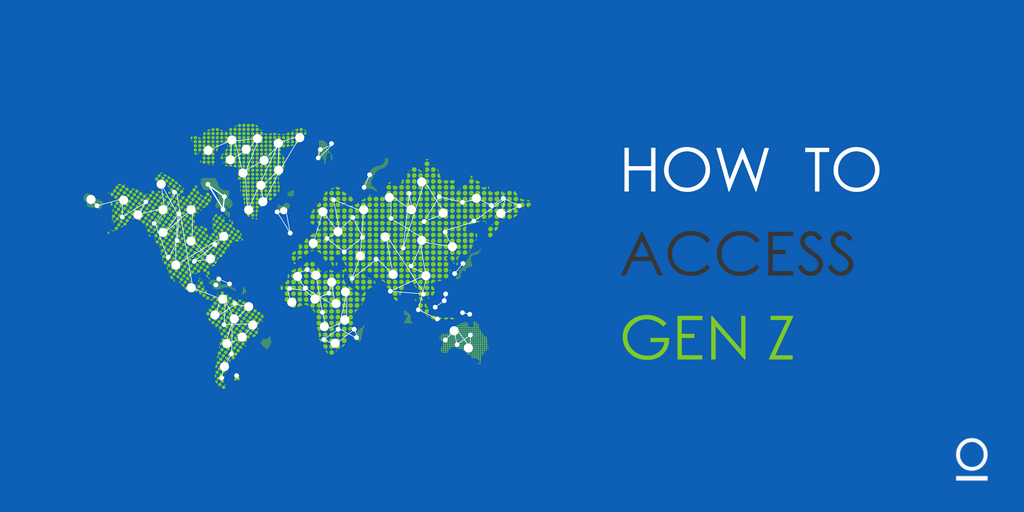This blog post outlines the “Need-to-know’s” about marketing to Centennials – the generation born from 1996 to 2010 that will make up over 20% of the workforce by 2020.
Picture this: you have recently tapped into an emerging social channel to access your new customer… but you have less than 8 seconds (and sometimes less than 1 second) to convince them that your latest offering is worth their time.
This is the conundrum of accessing Gen Z, the up and coming generation that is media savvy and extremely influential. Although there are many interpretations of where to draw the generational line, members of Gen Z are technologically advanced masters of ad blocking, born between 1996 and 2010. These new members of society (with an age range of 7 to 21 years of age) have grown up in a world where the internet has always existed – depending on your viewpoint, this is a marketer’s worst nightmare or greatest challenge.
How Gen Z Impacts Marketers
As millennials advance into adulthood, Gen Z has become the next generation to define the standards of what is cool, and what will inevitably die. Overly branded content is immediately disregarded, skipped, or pre-emptively blocked by the fingertips of this generation. With nearly ⅓ of Gen Z’s using ad blocking software, the effectiveness of banner ads is quickly diminishing. Given this generation’s digital expertise, companies must deviate from producing traditional ad content and learn to cater to the seamless and visual content preferences of today’s emerging consumers.
Members of Gen Z are masters at identifying ads, and will promptly skip them without a second glance. As a matter of fact, 42% of Gen Z will have a negative impression if the ad is unskippable. Because of this, marketers must abandon the idea of pushing traditional commercials, banners and popups in order to make way for sponsored media content which holds an entertainment factor that appears organic. In order to effectively campaign to Gen Z, your content must not come off like a “marketing campaign.”
Why do we need to shift?
Generation Z has become the next most influential demographic (over 93% of parents agree that their Gen Z children maintain influence on household spending). Although rendering traditional media ads useless may be seen as a dramatic shift, businesses who wish to target today’s youth must keep in mind that this generation has continuously adapted to new tech while growing up, and they will only watch what they choose to watch.
As time goes on, each generation’s “digital attention span” is contracting – on average, Gen Z’s attention span is 8 seconds, a dramatic decline from 12 seconds for millennials. Brands need to learn to swiftly get to the point, but at the same time not force their message so much that it deters interest in the product.
Where do we go?
The best way to reach Generation Z is through video and social campaigns. With that being said, there are certain ways that we can use these tactics to more effectively reach this new generation over its predecessors. Take, for example, celebrity endorsements. Today’s celebrities are internet personalities, and Generation Z is much more likely to buy on the recommendation of an online influencer they follow than a movie star.
Focus on harnessing talent from the top digital channels for Gen Z, such as Youtube, Instagram or Snapchat. Marketers must understand the value of genuine, active influencers for targeting Gen Z online, as nearly half of Gen Z is connected to media platforms for upwards of 10 hours each day. In order to effectively reach the next generation, we will need to re-think the use of popular marketing strategies.
[READ MORE: MARKETING CHANNEL SELECTION 101]
Who do we use?
The key to accessing Gen Z is to move away from targeting generalized demographics, and tap into niche online communities. At the head of these communities are social media personalities, or influencers, who continuously produce content that appeals to their youthful audience.
Given the interactive nature of influencers, Gen Z views them as “real people,” and receive their reviews or sponsored content as more genuine than traditional celebrity endorsements; over 63% of Gen Z’s actually prefer to see influencers over celebs in their ad content. In many ways, influencer promotion of products imitates the marketing gold standard: a peer recommendation. With over 85% of Gen Z using social media as their primary platform for learning about new products, it would be silly to disregard the power of the stars who steer the ship.
How do we build an effective campaign?
1. A Natural Relationship
The first step of integrating influencers into your campaign is ensuring that your prospects make sense. Although it seems like a fairly simple idea, a major trait of Gen Z members is that they are very good at identifying when a relationship is forced and will immediately reject an artificial recommendation.
2. Genuine Content
Given their ability to dodge promoted content, Gen Z is hypersensitive to content that seems out of character for their favourite influencers. Brands must allow room for the influencers’ creativity in campaign production, given that their job is to know what their audience really wants. Although brands may wish to maintain a certain image, influencers should be granted the freedom to use their discretion to produce content that will appear to be seamless next to the other posts on their timeline.
3. Shareability
Members of Gen Z enjoy being the focal point of their posts – brands need to keep this in mind when creating campaigns. Incorporating factors that are more personalized, engaging, and shareable will drive more reach. Resisting the urge to overly brand a post is crucial for this process. Rather, ask your audience to share their latest purchases or interact with yours (making it about them). However, keep in mind that Gen Z’s are very conscientious of their online image, with 57% taking caution to avoid posting content that will reflect poorly on their future, so stay well away from NSFW content.
4. Compatibility
Not only should your campaign be compatible with mobile (96% of Gen Z own a smartphone), but the ad should be tailored to the viewing style of Gen Z; video that may be understood without sound (subtitles), or audio that plays continuously while Gen Z multitasks on other pages or apps.
5. Experiential
Compared to their predecessors, Gen Z is far less materialistic and more inclined to be interested in experiential ventures. “Short-film” like videos surrounding travelling, festivals, events or other outings are more likely to catch the eye and be watched for a longer period of time.
6. Money Savviness
Due to growing up in a period of financial crisis, Gen Z understands the impact of economic instability and are therefore less inclined to take on debt and more inclined to seek more secure careers. As a result, they are attracted to posts that feature discounts, contests or rewards for interacting with the company or product.
7. Engagement
Given that Gen Z has grown up in a world where they have always had a platform to share their opinion, responding to consumers over social media builds a sense of trust and respect. If a Gen Z chooses to feature your product on their sacred timeline, you would be smart to interact with the user in some way.
Although there are multiple steps required to ensure that your brand has a smooth transition into the Gen Z spotlight, effective use of media channels will provide the reach that your company needs. Although their technological savviness may seem daunting, this demographic contains a promising digital community that is ready to be tapped into.
In order to access Generation Z, brands need to learn how to effectively integrate the world of influencers into their marketing mix. At Qoints, we are using artificial intelligence and psychographics to discover the optimum star personality pairings for each company – without a compatible match, your influencer spend is useless. Find out more about this process by following our blog posts and newsletter, or send us a message to learn more!



